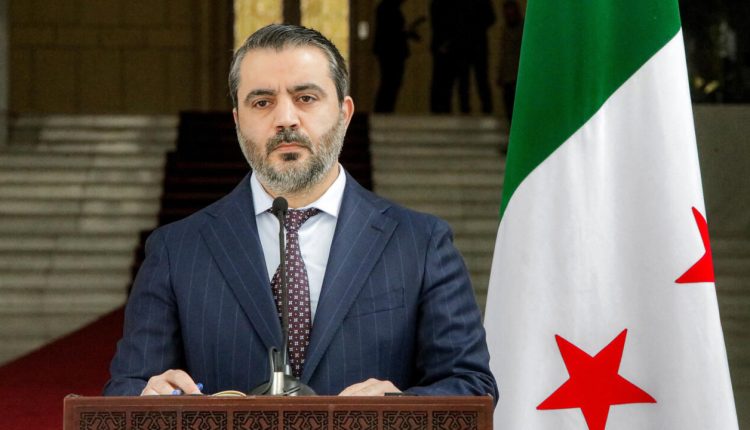Syrian Foreign Minister to Lead Delegation to Washington Amid Tentative Diplomatic Thaw
By Kardo Roj
DAMASCUS, Syria (North Press) – Syria’s Foreign Minister Asaad al-Shibani is expected to lead a high-level government delegation to Washington, marking what could be a significant step in tentative efforts to reengage with international institutions and Western capitals.
According to media reports on Saturday, ongoing logistical arrangements are underway to facilitate the visit, scheduled for late April, just ahead of the upcoming International Monetary Fund (IMF) and World Bank spring meetings in Washington, D.C.
The delegation, reportedly including the Ministers of Finance and Economy along with the Governor of the Central Bank of Syria, will participate in official IMF and World Bank events. While the trip’s formal agenda remains undisclosed, regional observers are watching closely for signals of broader diplomatic or economic overtures.
If confirmed, this would mark the first official Syrian government visit of this scale to the United States in over a decade, potentially signaling a shift in how Damascus seeks to navigate its long-standing isolation from Western institutions.
While Syria remains under heavy U.S. sanctions—particularly the Caesar Act sanctions targeting economic and political networks tied to past abuses—this visit could open space for technocratic dialogue around stabilization, reconstruction frameworks, or limited financial cooperation via multilateral institutions.
Officials from the U.S. State Department have not yet commented publicly on the visit.
The development follows recent regional dynamics that suggest a recalibration of roles in Syria, especially following renewed dialogue between Damascus and the Autonomous Administration of North and East Syria (AANES), supported by the Syrian Democratic Forces (SDF). The SDF, a key U.S. partner in the fight against the Islamic State (ISIS), continues to administer vast areas in northeast Syria under the framework of the AANES.
Recent cooperation agreements—such as the tripartite arrangement involving the U.S., AANES, and Damascus over the strategic Tishrin Dam—may have laid some groundwork for further technocratic engagements. While these talks are far from formal normalization, they suggest that dialogue on shared interests, including counterterrorism and infrastructure management, is ongoing.
Inside Syria, economic pressures have continued to mount. The national currency has plummeted, inflation remains high, and public sector salaries are now being distributed via a controversial digital payments platform, prompting both logistical and privacy concerns.
The expected participation in IMF and World Bank meetings may be viewed as an attempt to reintroduce Syrian officials into broader economic conversations. While direct financial assistance to Syria remains highly unlikely due to sanctions, officials may seek space for humanitarian finance mechanisms or explore regional investment guarantees under international oversight.
For the AANES and its security arm, the SDF, the visit will be watched closely, particularly as both entities maintain a pragmatic working relationship with U.S. forces and continue to stress the importance of inclusive political dialogue for long-term stability.
Whether Washington’s door remains partially ajar for diplomatic contact with Damascus may depend not only on the tone of upcoming meetings, but also on Syria’s willingness to align with broader regional de-escalation efforts and international legal standards.

